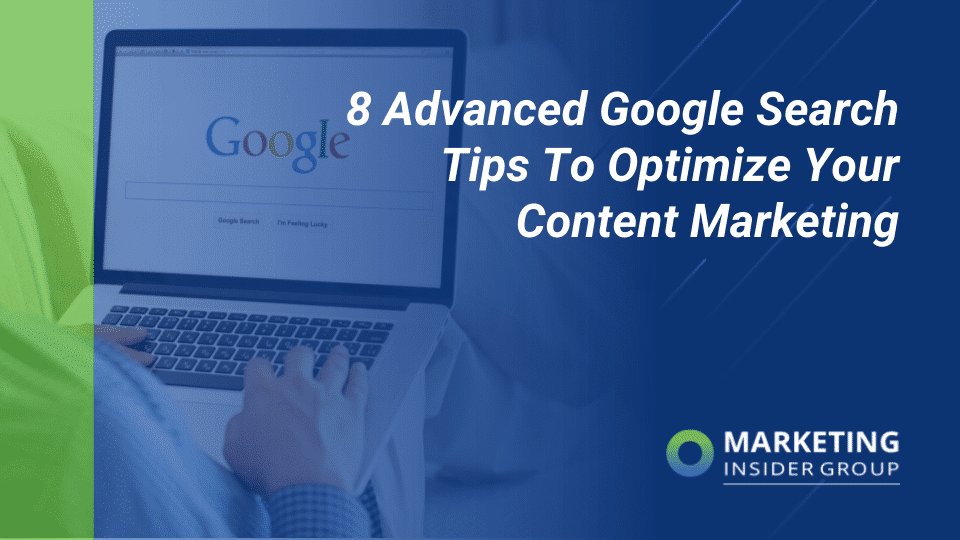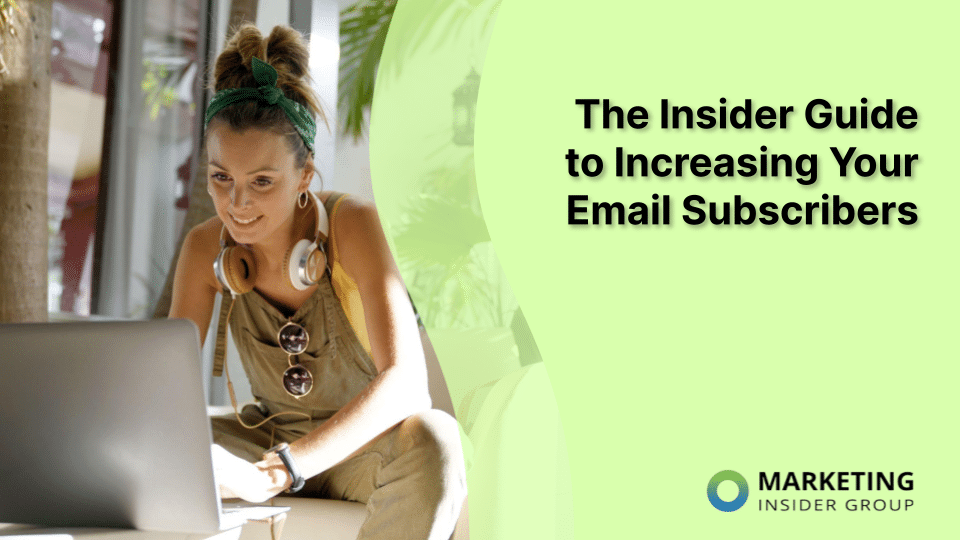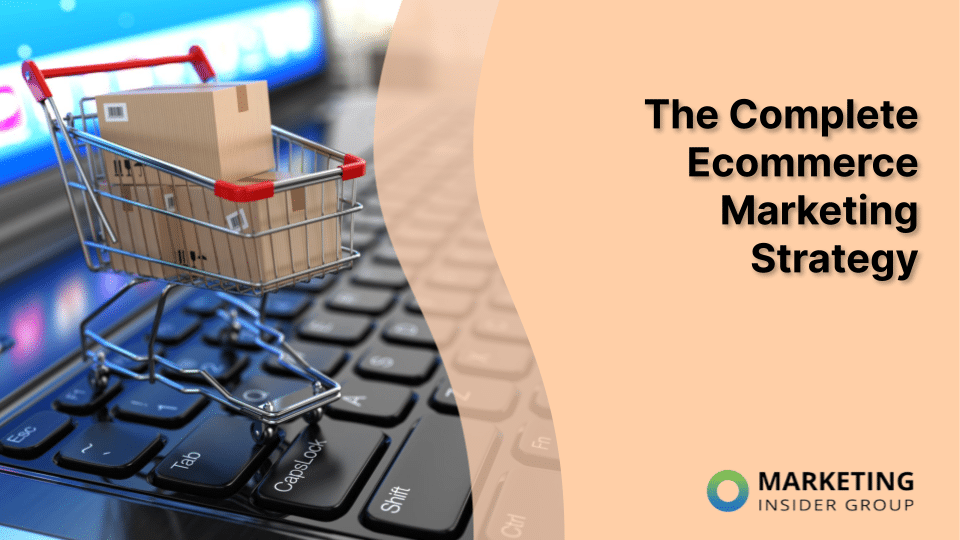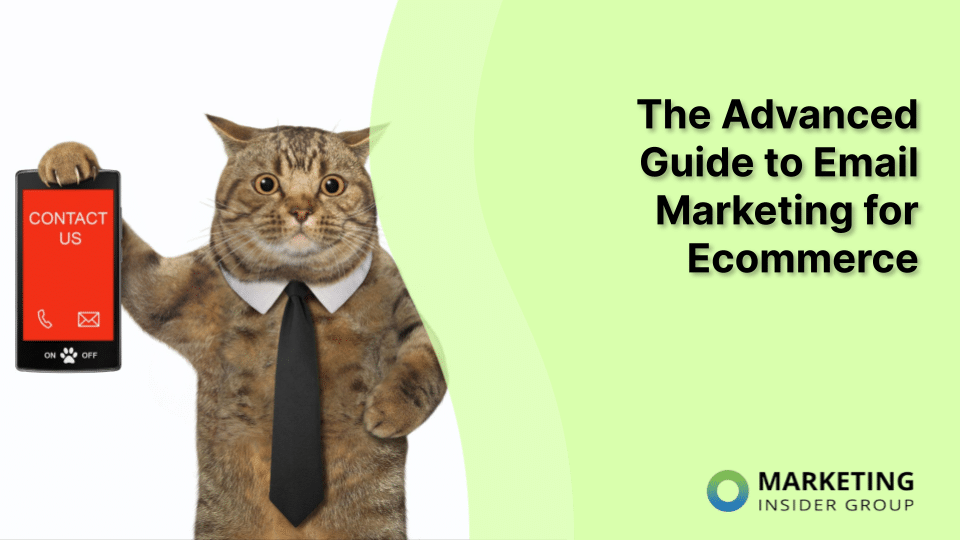
The Advanced Guide to Email Marketing for Ecommerce
To grow your ecommerce business, you have to be willing to invest in email marketing. As industries become more saturated and competition heats up, you have to work harder and harder to establish and nurture real relationships with your leads and customers.
Email is one of the most powerful channels you can leverage when it comes to communicating with and persuading the people who are ultimately going to buy products from you. Consider the following statistics about the power and value of email marketing for ecommerce:
- The number of email users worldwide is estimated to be over 3 billion.
- 73% of millennials identify email as their preferred means of business communication.
- Email is 40 times more effective at acquiring new customers than Facebook or Twitter.
- Every dollar spent on email marketing generates a $38 return and delivers a three-fold increase in purchases compared to spend on social.
As an ecommerce business owner or marketer, you’re likely already sending the occasional email campaign to your list, but you might not have a clear or proactive strategy in place.
This guide will provide you with 6 tips that you can use to build a clear strategy and start getting more ROI from your email marketing efforts now and in the months ahead:
1. Know Your Audience
To build an effective email strategy for your ecommerce business, one of the first things you need to do is make sure you have a firm grasp of who it is that you’re actually trying to reach. Taking time to know and understand your audience is crucial to your success now and in the future.
Every time you send an email out to your list (or a segment of your list), you’re creating the opportunity to connect directly and personally with your prospective customers in ways that you just can’t do on Facebook or Twitter. If you’re sending messages that don’t resonate with your subscribers or motivate them to take action, you’re wasting your time and potentially damaging your reputation in the process.
Your email marketing strategy needs to be built upon a foundation of knowledge about your audience.
To get to know your audience better, consider these three tips:
- Tip #1: Dig into Your Customer Data – If you haven’t already, spend time digging into your existing customer data in order to get to know your customers better. Look for trends relating to age, location, and purchasing habits. You probably have a good amount of subscribers on your list who have never purchased from you. Use the data you can collect from past customers to inform how you communicate with your future customers.
- Tip #2: Build Audience Personas – If you want to think more broadly about who your target audience is, spend time working with your team to build a few audience personas that you can reference and refine over time. Need help getting started? HubSpot has a great template that you can download and customize for your business.
- Tip #3: Check Data from Your Social Pages – You can also find a wealth of data from your social media page analytics about your audience. Dig into demographic and engagement data to get ideas about what kind of content to send to your email subscribers and when to send it to them.
Once you are confident that you know who your audience is, you can start thinking more about how you want to interact with them through future email campaigns.
2. Build an Actual Email Marketing Strategy
When you’re new to ecommerce, it’s easy to fly by the seat of your pants for a while until the dust finally settles. If you’re like a lot of other ecommerce business owners, you might not have ever really had the time to sit down and work on an actual email marketing strategy for your business. But building a specific strategy that you can work against is important. Here’s why:
- A strategy can help you focus. There are a lot of directions you can go with email marketing. A strategy can help ensure that you are not getting too distracted. It can help you prioritize efforts and focus on the ideas that matter most.
- A strategy can help you understand what works and what doesn’t. If you don’t have a clear strategy in place, it’s hard to know what’s working and what isn’t.
- A strategy can keep you and your team accountable. A strategy can help you and your team stick to deadlines, priorities, and goals.
- A strategy can help you set clear goals. A strategy forces you to think about the why. It forces you to think about why you want to send emails to your list, and what you’re hoping to get out of it.
- A strategy can be built upon and evolved over time. Without a clear strategy in place, it can feel like you’re starting over every 6 months. You don’t remember what worked, what didn’t, or why you tested one campaign over another. With a strategy in place, it’s easier to learn from the past and think about what you need to do differently in the future.
- A strategy can be handed to someone else. As an ecommerce business owner, you have to be able to delegate tasks in order to grow your business. When you take the time to build a clear strategy for email, it’s much easier to give the responsibilities and tasks to someone else on your team.
Email marketing should never be an afterthought. It needs the same amount of attention that other areas of your business are getting from you on a regular basis. You shouldn’t approach it as a one-off tactic that you can use whenever you need an uptick in sales. To get the most value possible out of the channel, you need to think strategically, proactively, and often about the communication that people on your list are getting from your brand. You need to see the bigger picture. That’s where mapping the customer journey comes into play.
3. Map The Customer Journey
When it comes to investing in email marketing for ecommerce, one of the biggest mistakes you can make is to only send sales and promotional emails to your leads. When you’re new to ecommerce, it’s sometimes hard to think about what kind of emails you should be sending outside of the ones that offer discounts and free shipping notifications, but there are a lot of other types of campaigns you can and should be sending in order to nurture relationships and build loyalty.
To go beyond the sales email and understand where the opportunities lie, it can be helpful to work on mapping out the actual journey that a typical customer navigates through who buys from you.
The customer journey, or buyer journey as it’s also called, looks different for every business, but here is a helpful example of what they typically look like:

As you can see, there are a few primary phases that your prospective customers will enter in and out of as they navigate through their journey toward buying. The phases are: Awareness, Consideration, Purchase, Retention (or Loyalty), and Advocacy.
As an email marketer, your job is to determine how to leverage email to help move people along in the process toward conversion and eventually advocacy.
Here are some examples of email campaigns you could send during each phase of the customer journey:
- Awareness: Welcome Emails, Product Education Emails, Blog Post Emails, Company Origin Story Emails
- Consideration: Product Feature Emails, Video Emails, Customer Story Emails, Abandoned Cart Emails, Promotion Emails
- Purchase: Promotion Emails, Order Confirmation Emails, Shipping Confirmation Emails
- Retention: Feedback Emails, Thank You Emails, Promotion Emails, Recommended Product Emails, Video Emails
- Loyalty: Special VIP Offer Emails, New Product Emails, Blog Post Emails
- Advocacy: Referral Offer Emails, Customer Story Emails, Customer Delight Emails
To learn more about customer journey mapping as it relates to ecommerce, read through this helpful blog post from Shopify.
4. Go Multichannel
Everyone knows multi-channel selling increases your customer reach. Each of your channels, including your ecommerce store and your marketplaces, get you in front of people you may not find if you weren’t right there, ready to sell, exactly when and where they’re shopping.
Yet, the quality of email leads from each channel differs. It’s likely that someone finding your website through a targeted search is more willing to buy from you AGAIN than someone who randomly saw your ad on Facebook, Instagram, or Twitter. Remember, email marketing for ecommerce is all about repeat purchases.
You get email addresses from all of your customers—though certain marketplaces like Amazon will try to anonymize those addresses—but just because you have an email address doesn’t mean you have high intent. That’s why your email campaigns need to differentiate between customers from each channel. Put each channel into its own group and ask yourself these questions:
- What types of new customers come from each channel?
- What actions do they take?
- How engaged are they?
- What do they like to buy?
Let’s say you’ve integrated your eBay marketplace with Sellbrite. Based on your eBay orders, product category, average order value, or maybe even time of day, what can you learn from your buyers?
Take all of the information you have and import it into an analytics platform like Amplitude. They have a behavioral cohort analysis feature that lets you segment customers based on their actions.

[Source]
The platform lets you set what actions and properties — like the ones above — you want to analyze. From there, you paint a picture of the types of customers you’re attracting from each channel.
Next, segment them into groups to send each one targeted and relevant emails. The result is a better customer experience and more successful emails.
5. Write Like a Human
In order to convince your email subscribers to take the action you ultimately want them to take, you need to connect with them on a personal level. You can’t just send the right types of email campaigns—to be successful, you need to make sure that the messaging you’re including in your campaigns actually resonate with your audience. Words and writing style matter a great deal with email marketing. The wrong message or positioning can not only lead to low CTRs, low open rates, and a lack of sales, it can also drive people to unsubscribe from your list altogether.
To ensure that you’re crafting messages that will resonate with your audience, focus on writing like an actual human being with a unique and distinct personality. No one wants to be sold to anymore—they want to feel connected to the brands they shop from on a personal and authentic level.
To ensure that you’re adding personality, style, and voice to your email marketing campaigns, keep the following tips in mind:
- Tip #1: Don’t try to be overly clever or funny. When you try too hard to be clever or funny in email copy, it can sometimes come across as inauthentic or forceful to recipients.
- Tip #2: Use active voice. Instead of saying, “the product will be shipped to you,” consider saying something like, “we’re shipping your product to you very soon!”
- Tip #3: Write like you would speak. Before sending an email campaign to subscribers, read your copy out loud. If something sounds funny or unnatural to you, it will sound odd to your subscribers too.
- Tip #4: Make sure your emails are coming from an actual person. Don’t use no-reply email addresses or leave your emails unsigned at the bottom. Instead, add personality and a human component to your email campaigns by having them come from a real person who can sign their name at the bottom of the copy.
- Tip #5: Don’t be afraid of exclamation points, emojis, or even ALL-CAPS. Your goal isn’t to write the perfect business email—it’s to write an email that connects with your audience, nurtures them, and convinces them to ultimately try one of your products. For some brands, that might mean going out of the traditional box and using exclamation points, emojis, or CAPS freely in emails.
Your subscribers are getting a lot of emails from a lot of brands every single day. Yes, AI is super-effective for email marketing, but by humanizing your email campaigns, you can cut through the noise and develop stronger relationships with the people you’re ultimately hoping to convert.
6. Personalize Your Emails
Another important aspect of effective email campaigns in ecommerce is personalization. If you want to get the people on your list to visit your product pages and purchase, you have to make them feel like they have a personal connection with you. Personalized emails can help you establish and nurture relationships, build trust, remove fear, create excitement, and drive action.
Consider the following statistics shared by SmartrMail.com — they illustrate the power of personalization in email campaigns:
- The open rate for emails with a personalized message is more than 30% higher than those without any personalization.
- Personalized emails delivery 6 times higher transaction rates.
- 80% of consumers like when emails from retailers recommend products based on their previous purchases.
Here are a few additional statistics shared by Campaign Monitor that further illustrate the value of personalization in email:
- Personalized email messages improve click-through rates by an average of 14% and conversions by 10%.
- Marketers see an average increase of 20% in sales when using personalized experiences.
- 53% of marketers say ongoing, personalized communication with existing customers results in moderate to significant revenue impact.
There are a number of ways you can personalize your ecommerce emails. Here are a handful of ideas:
- first names in subject lines and greetings
- product recommendation blocks that cater to each subscriber
- email campaigns based on seasonality or holiday
- Abandoned cart emails
- Viewing history emails
- special offers for specific geographic locations
7. Time Your Emails Right
When it comes to ecommerce, you have a few short seconds to grab attention. People are bombarded with ads everywhere: in their apps, while they’re surfing the web, and especially in their inbox.
Emails are key to reaching customers, but inboxes are prime real estate. You’re competing with lots of other emails for attention. And with mobile use so high, the majority of emails are opened on phones. As soon as you send an email, your customer’s phone notifies them.
It shouldn’t come as a surprise then that the time of day and day you send an email influences open rates. The point of your emails should be to maximize open rates, get customers to read them and then click-through to your website. You want customers to see your email as a welcome notification.

[Source]
Lots of research has been done to figure out the best time and day to send emails. CoSchedule used 10 studies from email marketing leaders like Campaign Monitor and MailChimp to figure this out. Even though the data ranges among the companies, there are a few common takeaways:
- The best day to send emails is Tuesday. Thursday and Wednesday are the next best days if you send at least two emails a week.
- The best time to send email is at 10 am. As an interesting side note, Campaign Monitor suggests 8 pm to midnight is a close second. These are likely people checking email before bed.
- While timing is important, your content and the quality of your subscriber list tie it all together.
When you time your emails right, you show customers that you respect and understand their day-to-day habits. You also increase the chances that customers open your email, take the time to read through and digest what you’re telling them, and click-through to purchase.
8. Be Consistent
When you have the customer’s attention you need to make the most of it. You don’t want them to open your email and click out because the content didn’t resonate with them. Consistent quality is a must.
What you need is a recognizable brand standard, something that sets you apart from competitors. The two major components of a strong brand standard are content and design. Let’s break this down.
Content
In order for your content to resonate with customers, you have to understand what they care about. Go back to past campaigns to find some indicators:
- Look to see which campaigns had the most open and click-through rates.
- Check analytics on your website to see what content different types of visitors are reading.
- Check your product pages. What products are the most popular? Check comments, reviews and the number of times they’re added to checkout.
A deep understanding of what your customer likes and wants can help you deliver really meaningful information in your emails. The more useful your content is, the more you encourage customers to take an interest in your emails and seriously consider what you have to say.
Design
It doesn’t matter if you’ve found the ultimate message that customers want to hear—if your email doesn’t look appealing, customers might not give it a second glance.
To make your emails aesthetically pleasing, use an email building platform with drag and drop capabilities. They’ve become the norm because you don’t have to know any code to build a professional email newsletter. For example, Campaign Monitor is a good place to start designing emails—either with drag and drop options, or from pre-built templates.

[Source]
With Campaign Monitor, you can use their editor to import images and to customize content and layout.
Sometimes visual communication is better than words—and for that, you can make diagrams using a tool like Gliffy. You can easily import these into Campaign Monitor.
When you create a brand standard, content and design help your emails reflect the look and feel of your website. They’ll also match branding in other places like social media or marketplaces to create a recognizable and cohesive presence. Be consistent across all platforms to boost the customer’s recognized perception of your brand.
9. Automate Your Email Marketing
Automated emails are a great way to re-engage customers. But instead of being the nagging salesperson, you can do this in a customer-centric way.
The last thing you want to do is to send emails just for the sake of sending something. Your goal should be for customers to see you as a partner and not just another retailer trying to make a sale.
A good way to do this is by sending customers snapshots of their history and interactions with your company. For example, the SaaS company AdRoll sends a monthly automated performance report highlighting user progress and providing personalized tips through liquid templating.
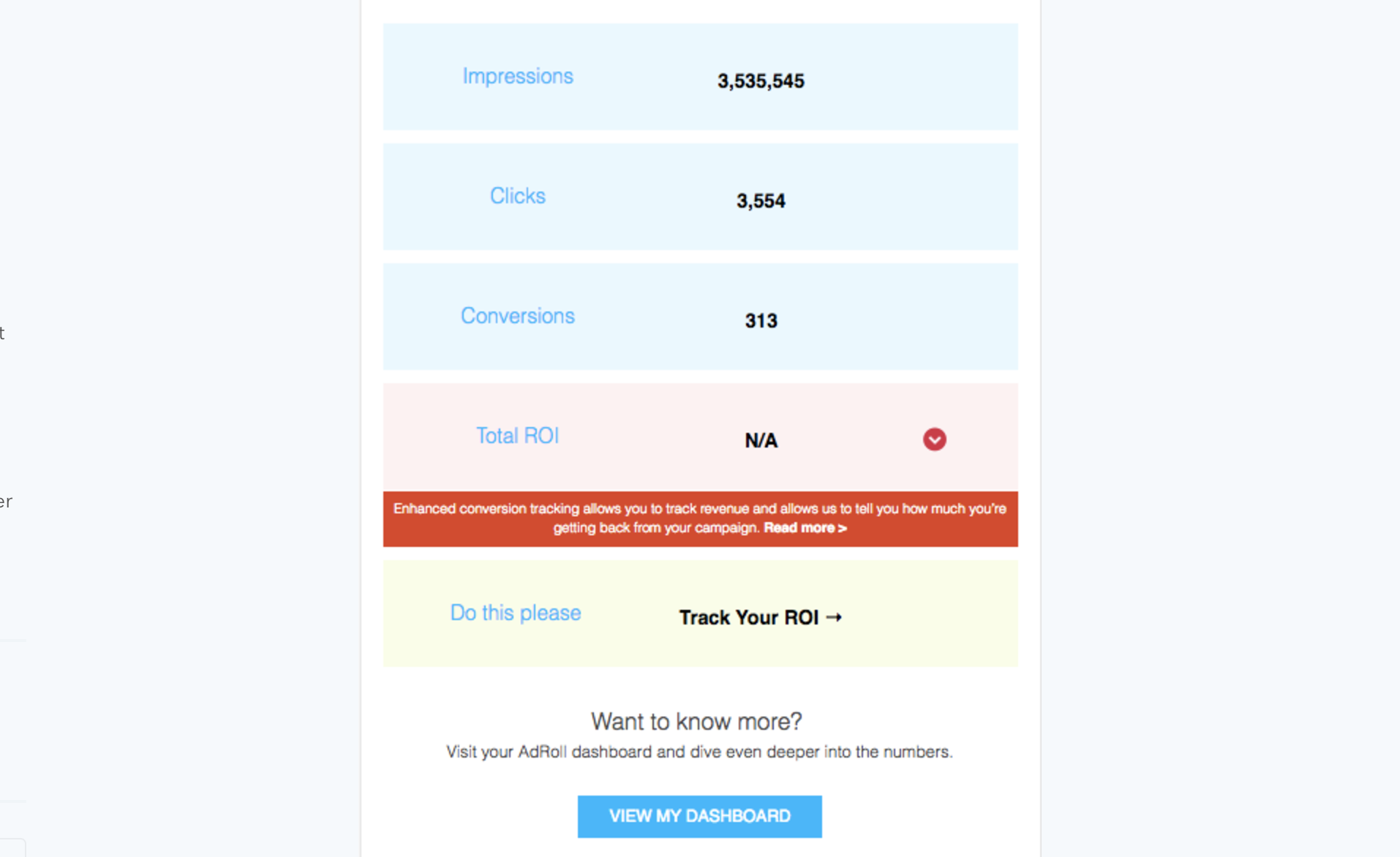
These emails are valuable because they help the customer accomplish what they want to do.
There are many ways to make this work for your company when you’re selling products rather than services. For example, if a customer comes to your website, adds products to their cart but doesn’t checkout, instead of sending a “finish your checkout” email, send an email that tries to get to the root of why they haven’t logged in. Use the dashboard your email marketing platform offers to gauge things like engagement and performance.

[Source]
Here you can see all of the general email metrics like opens, clicks and bounces, but you can also dig further into other campaign reports. For example, the Worldview link on the right will tell you how your campaigns perform in different regions. You might need to consider adjusting how you communicate your product offering or features to cater to different regions and boost your conversions — a.k.a. customers clicking through the email, adding products to their cart and completing checkout.
If you have to treat groups of customers differently, use something like Campaign Monitor’s customer journey feature to create targeted emails. For example, show customers in Canada a slightly different variation of the same campaign you send in the US. You want them to buy the same product but you introduce it to them differently.
This way your emails are more meaningful. They resonate with customers and build social currency — they’re more likely to open your emails than filter them into spam.
10. Ask for Feedback
The final way to get more ROI from your email marketing efforts is by asking for regular feedback from your subscribers and customers about their experience interacting with your brand. This type of feedback allows you and your team to work off of more than just assumptions or quantitative data. It adds a qualitative perspective that you can’t get without the help of your subscribers.
Ideally, you should be asking for feedback throughout the customer journey process. For example, you should be asking subscribers if:
- They have any questions about your products (before conversion)
- They are comfortable with the frequency of emails you’re sending
- They enjoy the type of content you send to them
- They think the offers and promotions you send are compelling and relevant
- They are enjoying the products you shipped to them (after conversion)
- They would be willing to tell their friends about your products and brand
- They had any problems or concerns about their shopping experience
Sending regular feedback request emails will not only help you build trust and strengthen relationships with subscribers and customers, it will also arm you with information you need to improve and grow your business over time.
11. Reciprocate
You can never go wrong with making your customers feel like they matter to you. Remember, the purpose of email marketing is to build relationships and retain customers. It’s not about just getting people to do what you want them to.
Instead of only sending emails that aim to get customers to buy something, take a break and send emails that ask customers for feedback, say thank you or teach something new. This approach leaves a positive lasting impression that builds customer trust and loyalty.
CloudApp proactively seeks out customer feedback to make sure customers needs are being met. They talk to customers to avoid losing them and give them a chance to voice their pain points. These kinds of emails have helped them see increased customer retention.
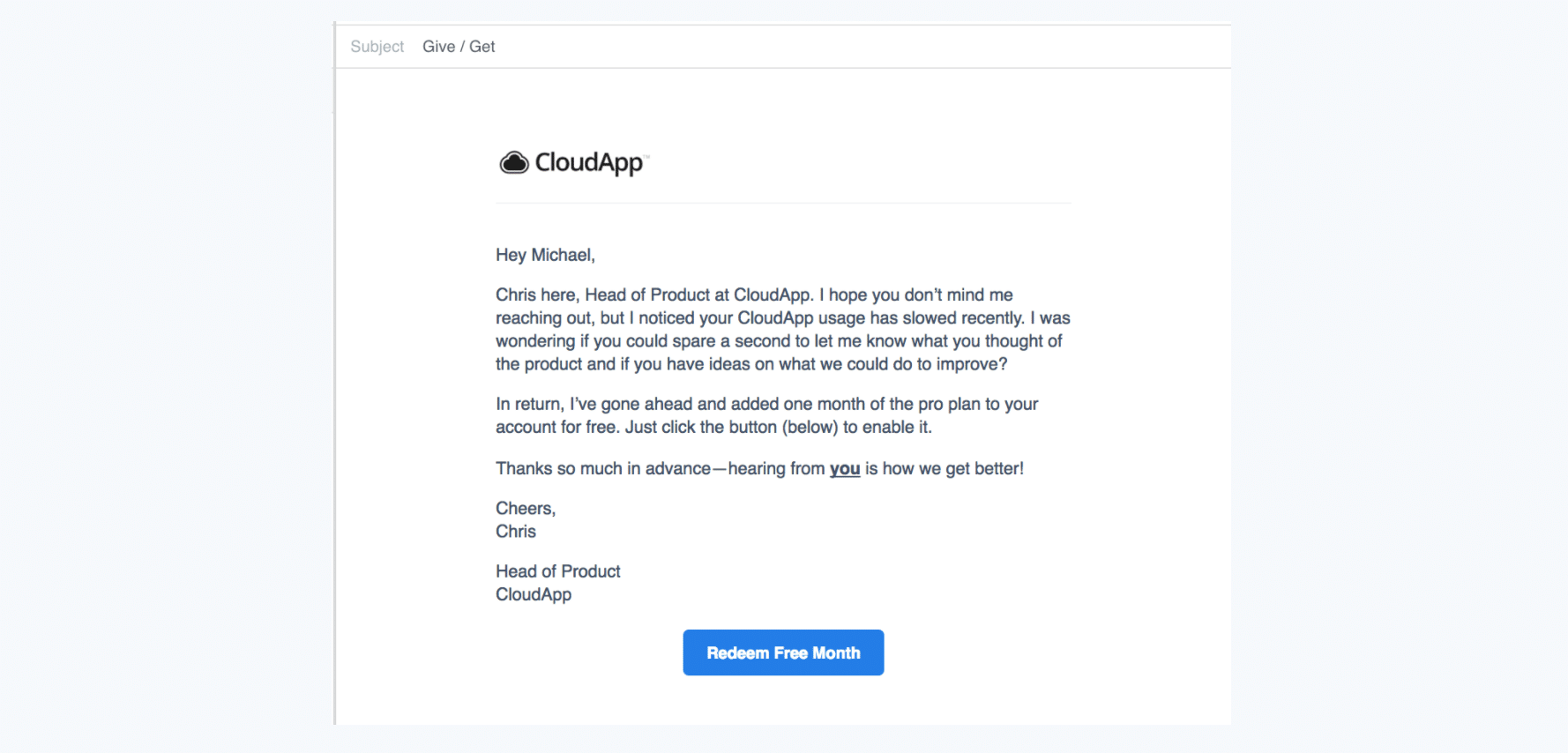
This Thank You email from Fitbit is another great example of a company reaching out to customers:

[Source]
It gives a short overview of where the company started and where it is now, 10 years later. Including a short list of accomplishments is a great way to show customers how they’ve contributed. It reinforces the commitment they’ve made to the company.
If you want to teach customers something new, highlight some new industry trend or fact and what your company is doing about it. Long-term this helps build personal connections and brand awareness. It also helps with retention since customers appreciate the extra attention and care you’ve given.
12. Optimize Your Email Marketing for Ecommerce
We know how important email is for communicating with customers. It sets the stage for you to introduce yourself and build a relationship that goes beyond just buying stuff.
Start by understanding who your customers are and how they found you. Treat them as individuals and make an effort to meet their specific needs.
Once you’ve figured this out, put a delivery plan in place to maximize open rates. Back this up with content and design that make you stand out. Make it recognizable, memorable and uniquely you.
And remember, you’re building relationships, so don’t make your conversations about business all the time. Show customers you care about them and their experience. Ask for their input and show them how you’ve implemented it.
Adopt one or two of the suggestions we’ve walked through and measure how well they work for you. Gradually add more and they’ll help you beef up your email marketing strategy and keep customers coming back. You know your customers better than anyone so use what you know and show them you care about more than just making a sale. Do that and we see a lot of happy, satisfied and loyal customers in your future.
Over to You
Most brick-and-mortar store shoppers find it annoying when a salesperson constantly shadows them. Even though it’s meant with the best intention, customers get uncomfortable when they know the salesperson is just trying to push a sale.
Email marketing works similarly for ecommere companies. When you send too many company-centric emails to push your products, you turn into that nagging salesperson.
Email isn’t just a way to get people to buy stuff—it’s a way for you to make meaningful connections with your customers by showing that you understand their interests. That’s how you build trust and long-term relationships that turn new customers into repeat customers. As you get to know each other, they see you as a partner and not someone trying to push something on them.

